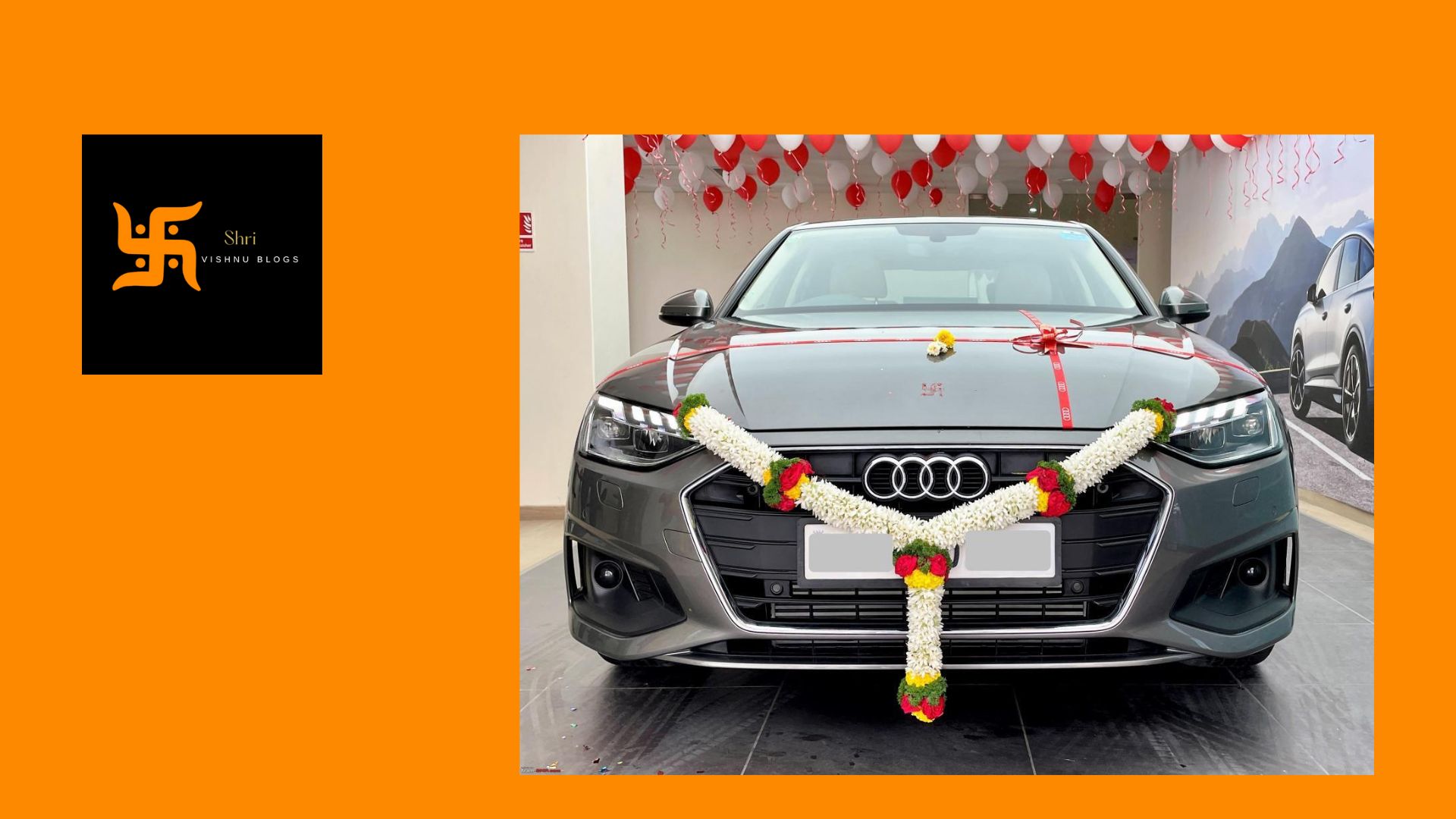
Embarking on the journey of buying a car is a mix of excitement and a bit of uncertainty for many people. Whether you’re a first-time buyer or upgrading to a new model, everyone’s experience is unique. The process can span months or be as quick as an afternoon, depending on your goals. To make the car-buying journey smoother, we’ve simplified it into 17 easy steps.
Whether you’re exploring your options or comparing insurance rates, use this guide as your go-to resource. If you’re ready to make a purchase today, check out our handy printable checklists for a quick reference at the dealership or while browsing online.
Simplified Steps to Car Ownership: Your Comprehensive Guide for a Stress-Free Purchase
1.Setting Your Car Budget: A Simple Guide to Smart Spending
When making a significant purchase like a car, it’s crucial to stick to your budget. Assess how much money you can comfortably allocate to a car and use this as your guiding limit. Take into account additional expenses like maintenance, fuel, and insurance when determining your car budget. A practical rule is not to exceed 20% of your net monthly income on your vehicle purchase.”
2.New or Used: Making the Right Choice for Your Car
Once you’ve sorted out your car budget, the next step is deciding between a new or used car. It’s a decision that involves various factors, so let’s explore the advantages and disadvantages of both to help you make an informed choice.
Pros and cons of buying new:-
Pros:-
Latest safety, navigation, and fuel efficiency technology
Warranty benefits
Smartphone connectivity
Personalized color and style options
Cons:-
- Higher upfront cost
- Depreciates in value
- Possible design or performance issues
Pros and cons of buying used:-
Pros:-
- Upfront cost savings
- Lower depreciation
- Simplified car-buying process
Cons:-
Potential for expensive maintenance or repairs
Older technology
Reduced fuel efficiency
If you lean towards buying used, check out our used car-buying checklist below to guide you in evaluating your options.”
3 .Decoding Car Finance: Navigating the World of Auto Loans for a Smooth Purchase
Crunching the Numbers: Understanding Car Financing
While it would be great to pay for a car with savings, many of us don’t have that luxury. According to Experian, a whopping 86% of new car buyers and 37% of used car buyers rely on financing. If you find yourself in a similar situation, exploring financing options is the next step.
Looking into private financing, like loans from a bank or credit union, is a wise move. It often leads to better deals compared to dealership financing. Consider getting pre-approved for a car loan before you start shopping. This not only streamlines the process but also gives you negotiation power, as being pre-approved makes you a cash buyer, not just someone focused on monthly payments.
4.Choosing Your Ideal Ride: Sorting Out Must-Haves and Nice-to-Haves
Crafting Your Dream Drive: Prioritizing Must-Have Features for Your Ideal Car
Now that you’ve tackled the financial side of things, it’s time to focus on what you truly want in a car. Create a list of features, ranging from safety enhancements and sleek designs to advanced Bluetooth and fuel efficiency. Prioritize these into must-haves and nice-to-haves.
Consider how you’ll use the car and tailor your list accordingly. For instance, all-wheel drive might be a nice addition for city driving, but it could be a necessity if you often venture onto rugged terrain. Once your list is set, start exploring cars that match your criteria.
- Finding Your Perfect Match: Streamlining Your Car Choices
Simplifying Your Search: A Practical Guide to Narrowing Down Your Car Options
With your list of essential car features in hand, it’s time to explore models that align with your needs, preferences, and budget. While online research is popular, don’t forget to tap into the experiences of friends and family who can provide valuable insights into their own car-buying journeys and share reviews on their current or past vehicles.
Once armed with information, narrow down your options to the top three contenders. Reach out to dealerships or explore online sellers to get a better sense of what’s available in the market.
6.Getting the Best Deal: Understanding Fair Market Prices
Cracking the Price Code: Your Guide to Researching Fair Market Prices for a Smart Car Purchase
Once you’ve identified your top choices, it’s crucial to research the fair market prices for those models. Leverage appraisal tools like Kelley Blue Book or NADA to gauge the reasonable value of the cars you’re eyeing. Whether you’re in negotiations with a private seller or at the dealership, having this research at your fingertips becomes a powerful bargaining tool. It ensures you secure the best deal, particularly if the car you want is priced unreasonably high.
7.Strategizing Your Car Purchase: Timing Tips for Getting the Best Deal
Strategic Timing: Unlocking Savings by Choosing the Best Time to Buy Your Car
When it comes to buying a car, timing is key to getting the best deal. If possible, consider making your purchase between October and December. During this period, dealerships aim to meet yearly sales quotas, and older models need to make way for new inventory at the end of the year.
If waiting isn’t an option, target Mondays for your car shopping. Weekends are typically busy for dealerships and lenders, making Monday a strategic day for negotiations. With a less hectic atmosphere, you have more time to secure a favorable deal, as sellers may be more open to negotiating after a busy weekend of sales.
8.Taking it for a Spin: The Importance of Test Driving Before You Buy
On the Road Again: Why Test Driving is the Key to Your Next Car
No matter how much research you’ve done or how certain you are about the make and model, test driving is a crucial step before purchasing a car, even if you’re buying online. What looks good on paper might feel different on the road, so try out a few options based on your preferences.
For used cars, this step is even more vital to avoid unexpected issues. Engage all your senses during the test drive—look for damage, check for unusual smells, and listen for any concerning noises. If you’re serious about buying, consider having a mechanic inspect the car.
After the test drive, you’ll have a clearer picture of whether the car aligns with your expectations and preferences.
9.Your Perfect Match: Navigating the Search for the Ideal Car
Hunt for Your Ideal Ride: Navigating the Search for the Right Car
Once you’ve pinpointed your preferences, it’s time to embark on the journey of finding the perfect car. If you’re opting for a new car, this may involve locating a dealership with the right color or safety features in stock. On the used car front, it could mean scouting for a private seller nearby with the exact year and model you desire. Consider exploring a few similar options, and be prepared to widen your search radius if needed.
10.Securing Your Ride: Navigating Car Insurance for the Best Deal
Driving Safely, Insuring Smartly: A Guide to Comparing Auto Insurance for Your New Car
Now that you’ve settled on your top choice, it’s time to consider car insurance as a crucial part of your budget. Since it’s the second-largest expense after the car itself, use tools like The Zebra to compare insurance rates and ensure you’re getting the most favorable deal. Have details about your credit score, driving history, and preferred coverage levels on hand for accurate quotes. For a better understanding of your coverage options and help choosing the right insurance company, explore this car insurance buying guide.
11.Collecting Quotes: Essential Steps Before Sealing the Deal
Quote Quest: Navigating the Essential Steps Before Your Car Purchase
With your desired car(s) in sight, it’s time to gather price quotes from various dealerships or private sellers. Aim for at least three quotes to make effective comparisons. Don’t skip the test drive if you haven’t already and take this opportunity to ask questions about the car’s features and address any concerns you may have. The insights you gather now will play a crucial role in making an informed decision and negotiating the best possible price later.
- Car Shopping from Your Couch: Exploring the Online Option
Click and Cruise: A Guide to Buying Your Car Online with Ease
If the traditional dealership or private seller route feels like too much effort, consider the convenience of buying your car online. Explore new and used car options effortlessly from home using platforms like J.D. Power, Carvana, or CarMax. With this approach, you can complete the entire car-buying process without the need for face-to-face interactions. Keep in mind that this option is typically available for used cars only, as new cars are exclusive to dealerships in the United States. However, buying a used car online is a viable and convenient choice, often accompanied by excellent return policies if you change your mind.
13.Maximizing Value: Tips for Getting the Best Trade-In Offer for Your Car
Boosting Your Trade-In Value: Smart Moves Before Negotiating
Before diving into negotiations, consider trading in your current vehicle if you already own one. Seek offers from different dealerships and use this information to your advantage, even if you plan to sell privately for more money. If selling privately isn’t your plan, the dealership’s offer can be a valuable contribution to your new car purchase. Here are a few tips to secure the best trade-in offer:
If your car is a popular model with low mileage, consider selling to a used-car dealer as they always need new inventory.
Make minor repairs like fixing a dim headlight to increase your car’s trade-in value. Avoid spending on major repairs; the dealer can handle those more affordably.
Enhance your car’s appearance by giving it a good wash and cleaning up the interior and engine for a positive impression.
14.Securing the Best Deal: Mastering Car Negotiation
Mastering the Art of the Deal: Your Guide to Successful Car Negotiation
Whether you’re dealing with a dealer or a private seller, seizing the opportunity to negotiate is crucial for getting the best deal. One strategy is to gather offers from different sources and use them as leverage. This indicates that you’ve done your homework and can justify a price reduction. Here are a few negotiation tips:
Patience is key. Negotiating in a rush is challenging, so take your time to discuss details and ensure you have accurate numbers, especially the out-the-door price.
Remember, you can walk away. If the deal isn’t fair or doesn’t meet your expectations, feel free to step back from the negotiation.
Negotiate beyond the car price. Lowering your interest rate for financing or securing better terms for your trade-in can add extra savings to your wallet.
- Smooth Buying Process: What to Bring When Purchasing a Car
Ready to Roll: Essentials to Bring When You’re Ready to Buy Your Car
Streamline the car-buying experience by being well-prepared with the necessary documents and payment details. Ensure a quicker process at the dealership or with a seller by having the following items on hand:
- Your driver’s license
- Proof of car insurance
- Your chosen payment method (e.g., loan, check, cash)
If you’re opting for dealership financing, also include:- - A credit report
- Proof of employment (e.g., recent pay stubs)
- Information on rebates or discounts (e.g., manufacturer deals or credit card perks)
- A reference list (for those with lower credit scores)
- Securing Your Ride: Wrapping Up the Insurance Process
Drive with Confidence: Finalizing Your Car Insurance for a Stress-Free Ride
Here’s a money-saving tip: Purchase your car insurance in advance before getting your new car. Buying insurance online and paying in full upfront often gets you the best deal. Once you have your car details, such as the VIN, share it with your insurer along with your driver’s license, Social Security, and lien holder information if you’re financing. Remember, you must have all insurance paperwork completed and an active policy in place before you can hit the road with your new car.
- Sealing the Deal: Your Guide to Making the Car Purchase
Driving Away Happy: Your Ultimate Guide to a Successful Car Purchase
With your insurance sorted and the details settled, it’s time for the exciting moment of buying your car. Sign the paperwork, accept your new keys, and congratulations on officially becoming a car owner!
Additional Tips for a Smooth Car Buying Experience:
For Buying a New Car:-
- Listen to Experts:- Trusted sources like Kelley Blue Book and Consumer Reports provide valuable reviews and guides.
- Search for Discounts:- Explore cash back offers, low-interest financing, or student discounts to snag a great deal.
- Break Down the Numbers:- Avoid falling for a single number by breaking down costs like the car price, trade-in value, and financing separately.
For Buying a Used Car:-
- Explore Certified Pre-Owned Options:
Consider cars with manufacturer warranties for added reliability.
- Inspect Before Test Driving:- Ensure everything is in good condition before hitting the road.
- Consider a Down Payment:- While not mandatory, a down payment can lower your monthly payment and reduce the risk of owing more than your car’s worth.
FAQs
Frequently Asked Questions (FAQ) about Buying a New Car:-
- Q: How do I determine my budget for a new car? A: Assess your financial situation and aim to spend no more than 20% of your net monthly income on the vehicle. Consider additional costs like maintenance, gas, and insurance.
- Q: New or used – which is a better option?
A: Both have their pros and cons. New cars offer updated technology and warranties but come at a higher price. Used cars are more affordable and have lower depreciation but may require more thorough inspections.
- Q: What should I prioritize when listing important car features?
A: Prioritize features based on your lifestyle. Consider safety enhancements, design preferences, fuel efficiency, and other aspects. Tailor your list to match your driving needs.
- Q: Is it better to finance a car through a dealership or a bank?
A: Private financing, like a bank or credit union, often provides better loan deals compared to dealership financing. Getting pre-approved for a car loan beforehand can streamline the process.
- Q: When is the best time to buy a car? A: The months between October and December are generally ideal, as dealerships aim to meet yearly sales quotas and clear out old inventory. Mondays can also be advantageous, with less crowded dealerships after busy weekend sales.
- Q: Why is a test drive essential before buying a car?
A: A test drive allows you to experience the feel of the car on the road. It’s crucial for assessing comfort, handling, and identifying potential issues, especially when buying a used car.
- Q: How can I negotiate the best deal on a new car?
A: Gather multiple offers from different sources, showcasing that you’ve done your research. Be patient during negotiations, be willing to walk away, and consider negotiating not only the car price but also financing terms and trade-in values.
- Q: What documents do I need to bring when finalizing the purchase?
A: Essential documents include your driver’s license, proof of car insurance, and your chosen payment method. If financing, additional documents like a credit report, proof of employment, and rebate information may be required.
- Q: Can I buy a car entirely online?
A: Yes, particularly for used cars. Platforms like J.D. Power, Carvana, or CarMax offer the convenience of browsing and purchasing cars online.
- Q: Why is it important to finalize your insurance policy in advance?
A: Purchasing insurance beforehand can save money. Provide your insurer with necessary details like the VIN, driver’s license, Social Security, and lien holder information if financing before driving away with your new car.
Conclusion:-
Embarking on the journey to buy a new car can be both exhilarating and challenging. From setting your budget to finalizing insurance, this step-by-step guide has aimed to simplify the process, ensuring you make informed decisions along the way.
Remember, understanding your budget is the cornerstone of a successful car purchase. Whether opting for a new or used vehicle, prioritizing features that align with your lifestyle ensures satisfaction with your choice. Financing considerations, such as exploring private financing options and getting pre-approved, add another layer of financial savvy to the process.
Timing matters in the car-buying world, and being strategic about when to make your purchase can result in significant savings. Test driving is not just a formality; it’s your opportunity to experience the car on the road, ensuring it meets your expectations.
Negotiation is an art, and arming yourself with multiple offers and being patient during the process can lead to the best deal. Finally, as you finalize the purchase, having the right documents on hand streamlines the paperwork, bringing you one step closer to driving away with your new car.
By following these steps, you are well-equipped to navigate the intricacies of buying a new car. Now, as you prepare to take the keys, revel in the excitement of becoming the proud owner of a new set of wheels. Safe travels on the road ahead!




More Stories
बुद्ध और अंगुलिमाल की प्रेरणादायक कहानी – कैसे एक हत्यारा बना संत
Unveiling Love2Love.lv: Latvia’s Niche Dating Platform Redefining Modern Romance
Clash of the Coasts: Orioles vs. Giants – A Deep Dive into Player Performances and Game Dynamics